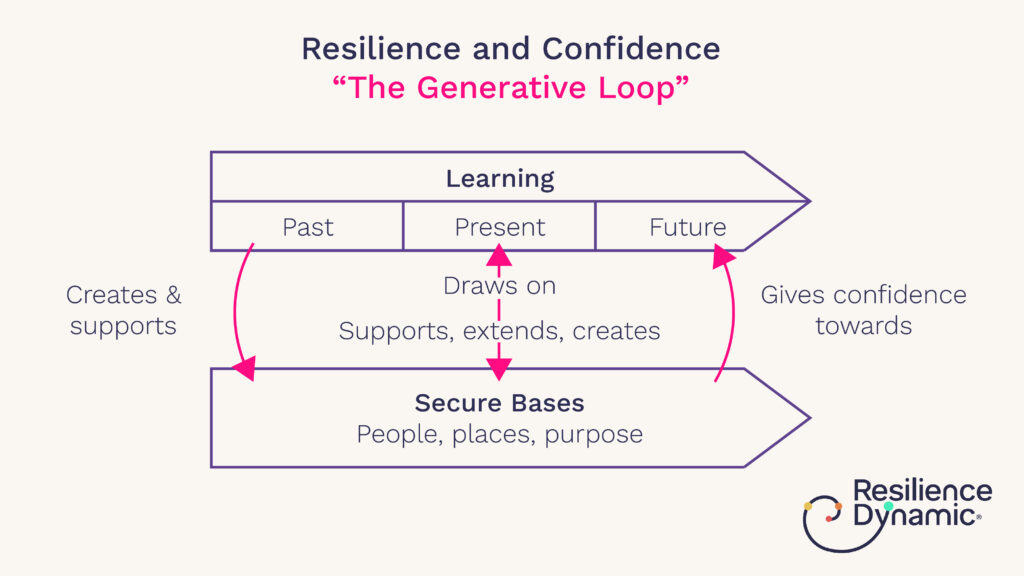Busting the Myths of Resilience
“Confidence is needed for resilience”
Which comes first, then; confidence or resilience? In this article, we will bust one of the myths of resilience; Confidence and Resilience.
“Much of the academic and popular management literature states that for resilience you need confidence: ‘Self confidence is a crucial component of resilience because it creates a forward motion of positivity and optimism.’1 Many resilience evaluation methods use confidence as a survey measure contributing to your output resilience level. The voice of this body of literature has resilience as an output of confidence.
A few writers and some researchers don’t try to distinguish one from the other and instead just conflate the two concepts. Resilience is confidence, confidence is resilience”.
– Extract from The Resilience Dynamic® by Jenny Campbell
This type of thinking has two sources:
- Either from clinical research where there has been significant trauma with an ensuing period of major deficit of resilience, i.e. not coping
or
- a limited definition of resilience and/or confidence itself
With the many sources of research taken into account, The Resilience Dynamic’s research has found that ‘confidence and resilience do not have a one-way relationship, but instead are interlocked and generative together.’
Busting the myths of resilience:
Confidence building is not a woolly thing, it is, in fact, a clear and actionable process. The Resilience Dynamic sees the relationship between confidence and resilience as a generative loop:

Secure bases can be drawn on in the moment of any situation, by bringing them into your attention, your memory, or indeed how you feel. They give you a lift, a burst of energy, inspiration to keep going or to look about for other options, or to shift towards something more meaningful. Knowing that these secure bases work for real for you in your day-to-day work and life is what delivers confidence in your future.
The Resilient Way contributes to, enhances and indeed creates secure bases:
- The learning from your past experiences contributes to how your secure bases support you and give you safety.
- Difficulties of previous relationships, where maybe your boundaries were badly managed, will help you understand which people now really can and do act as a secure base for you.
- Challenges that you have overcome will enhance your sense of purpose or meaning today and in the future.
- When you do come through a period that is tough, you realise how important your secure bases are to you. And that enhances your level of security in what you’re about in this world.
- New meaning in your life, whether new places, new relationships or new purpose, all can form new secure bases.
Living in a more Resilient Way in the present enhances your secure bases. The more you invest in your relationship with these secure bases, the more they provide that sense of both security and inspiration to take risks.
As the base layer for confidence, secure bases are therefore both enhanced and drawn on by living more resiliently. It’s definitely a two-way street.
What are your own secure bases?
For example:
- Who inspires you to be both yourself and to be the best you can be?
- How often do you connect with these folk in your life?
- Are you enhancing this secure base in the way that you allocate your time across work and personal life?
- Or are you trading on what was once upon a time and thus diminishing the confidence you might have?
- Secure bases don’t stand still. You need to nourish and protect them.
This is part of The Resilience Way, exemplified in the book The Resilience Dynamic®.
Gain exclusive access to Resilience Dynamic in-depth insights
Extend your knowledge, expand your thinking into Healthy, High Performance.
Register today and get your free login to:
- Gain exclusive access to in-depth resilience insights.
- Download and share the insights with your friends and colleagues.
- Receive resilience in-depth insights and tools straight to your inbox, every month.
If you are already receiving our resilience tools via email but it's the first time seeing this exclusive access, do register. You'll get the new exclusive insights, plus be able to download all articles. Simply complete this registration form once to get your login details.
Read our privacy policy
